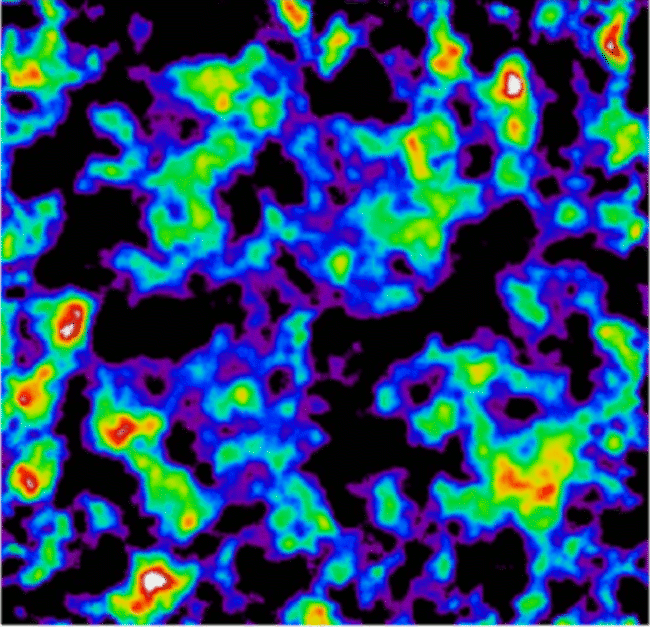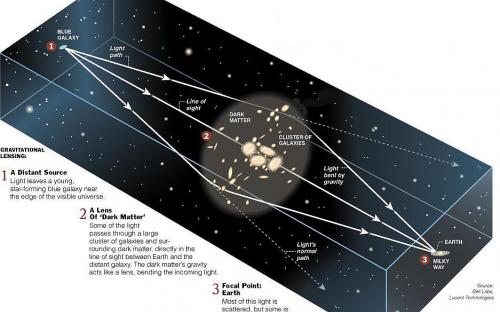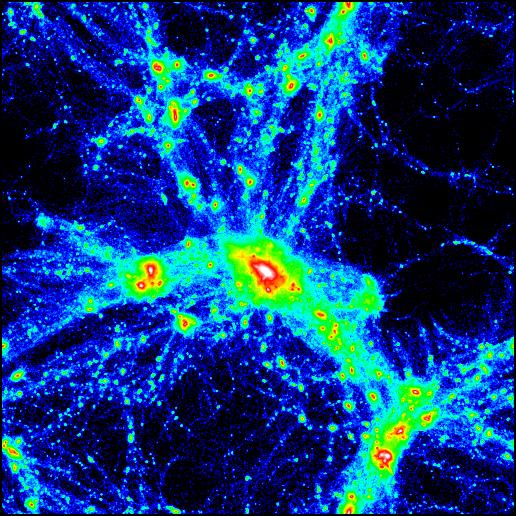At the faint magnitudes reached by large telescopes, the sky is studded with tens of billions of faint distant blue galaxies. In recent years astronomers have become adept at mapping the dark matter associated with known galaxy clusters using these background galaxies as a cosmic wallpaper for weak gravitational lensing analyses.

This is an image of dark matter in a 2 degree by 2 degree field of the sky from the Deep Lens Survey. Many mass clusters may be seen in projection. With color redshift information on the background galaxies, three-dimensional maps can be constructed. The LSST is needed to make these tomographic mass maps over a cosmologically significant area.
With multi-wavelength deep imaging of the faint blue galaxies, we can construct photometric redshifts for them and go beyond a simple foreground/background paradigm. Photometric redshifts enable tomographic analysis of slices of the projected sky in redshift bins. By obtaining weak lensing maps for sources at a variety of redshifts, we can obtain a three-dimensional mass map of the universe back to half its current age. Only the Large Synoptic Survey Telescope with its combination of huge field and large light grasp would enable such a survey in our lifetimes.



